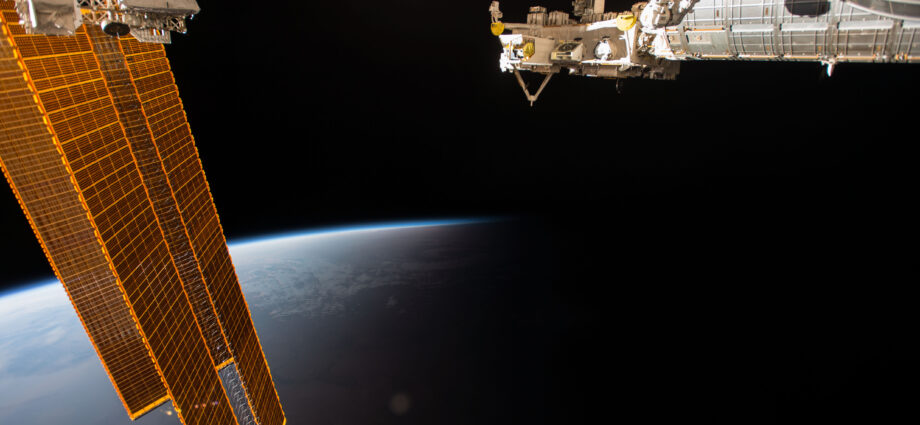
In an important milestone for space exploration and renewable energy, a prototype space-based solar power plant developed in California by Caltech experts demonstrated for the first time its effective ability to deliver energy to Earth
June 10, 2023
The Space Solar Power Demonstrator (SSPD-1), a “pioneering space-borne prototype” developed by Caltech’s Space-Based Solar Power Project (SSPP), has successfully demonstrated wireless power transfer and beamed detectable power to Earth for the first time.
On the night of May 22, a group of researchers and students from Caltech’s electrical engineering department conducted an experiment to test their power transfer system for gathering solar energy in space and transmitting it to Earth. They had previously successfully used microwave radiation to light up a pair of LEDs on their spacecraft, but this time they were aiming to detect measurable power transmitted to Earth.
They were excited to find confirmation of their experiment: the monitors connected to their equipment picked up an electrical signal matching the projected energy from their satellite.
This breakthrough demonstrated the feasibility of their power transfer system in space.
How MAPLE works: A great leap forward in energy transmission efficiency
The success of the prototype, named Microwave Array for Power-transfer Low-orbit Experiment (MAPLE ), is a testament to the cutting-edge technology and innovative research conducted by a team of brilliant scientists led by Professor Ali Hajimiri.
MAPLE, one of the three key technologies tested within SSPD-1, represents a significant leap forward in wireless power transfer.
The technology utilizes an array of flexible and lightweight microwave power transmitters driven by custom electronic chips. These transmitters precisely direct the transmitted energy towards desired locations.
By harnessing constructive and destructive interference between individual transmitters, MAPLE can dynamically focus and control the direction of the transmitted energy, achieving unparalleled efficiency without the need for any moving parts.
This extraordinary achievement brings us one step closer to capturing solar energy from space and utilizing it to power our daily lives.
Ali Hajimiri expresses his excitement over the successful transmission of power by stating,
“Through the experiments we have run so far, we received confirmation that MAPLE can transmit power successfully to receivers in space.”
The implications of harnessing solar energy from space and utilizing it on a daily basis are immense.
Space solar power provides an unparalleled opportunity to tap into the virtually limitless solar energy available in outer space. Unlike solar panels on Earth, which are limited by daylight and weather conditions, solar panels in space would continuously generate electricity.
This means that the greatest hurdle solar power faces is overcome: The potential yield of space solar power is estimated to be up to eight times greater than traditional solar panels on Earth’s surface.
While the Caltech Space Solar Power Project (SSPP) has achieved a significant breakthrough in the race for solar power from space, it is important to note that other projects are also pursuing this ambitious goal.
Other projects of solar power in space: Japan, China…But Caltech is a frontrunner
In Japan, a public-private partnership plans to test the feasibility of beaming solar power generated in space to Earth and converting it into electricity by 2025. Japan’s project has already conducted successful tests of microwave power transmission over short distancesand aims to demonstrate the potential of harnessing solar energy in space for terrestrial electricity needs.
Additionally, China has ambitious plans to build a solar power station in space, while the European Space Agency (ESA) is exploring the concept of Space-Based Solar Power plants through its SOLARIS initiative.
These projects highlight the global interest and increasing competition in developing space-based solar power technology. However, the success achieved by the Caltech SSPP positions it as a frontrunner in this race, paving the way for the realization of this groundbreaking concept.
“When fully realized, SSPP aims to deploy a constellation of modular spacecraft that capture sunlight, convert it into electricity, and then transmit it wirelessly as microwaves over long distances,” Caltech stated in a press release back in January. This innovation shows the potential to revolutionize the way we access and distribute energy, especially in remote regions and areas affected by conflicts or natural disasters.
Sergio Pellegrino, co-director of SSPP, highlights the significance of the flexible power transmission arrays in Caltech’s vision. These arrays are integral to the design of “sail-like solar panels that unfurl once they reach orbit.” By employing flexible lightweight structures and custom integrated circuits, Caltech researchers have not only pushed the boundaries of scientific achievement but also opened doors to a future where renewable energy becomes universally accessible.
Ali Hajimiri emphasizes the transformative potential of wireless energy transfer, stating, “No energy transmission infrastructure will be needed on the ground to receive this power. That means we can send energy to remote regions and areas devastated by war or natural disaster.”
By eliminating the need for extensive ground-based infrastructure, wireless energy transfer promises to democratize access to energy and bring light and power to areas currently lacking reliable sources of electricity.
Of course such good premises are in need of further research and most importantly more fundings that will enable the development of infrastructures at an industrial production facility level. As stated by the Caltech project they believe that with the right support “in about five years, they might be able to build a system that could transfer enough solar power to charge a laptop from space. From there, it would be a matter of scaling up further to build a full-fledged commercial power station.”
Subscribe to our newsletter.
In the race for solar power from space, the SSPP has taken the lead. By successfully beaming microwave energy from a satellite to Earth,it has proven the viability of space-based solar power. As other projects strive to catch up, this success shines as a pioneer, illuminating a future of boundless and clean energy for all.
This article was originally published on IMPAKTER. Read the original article.

